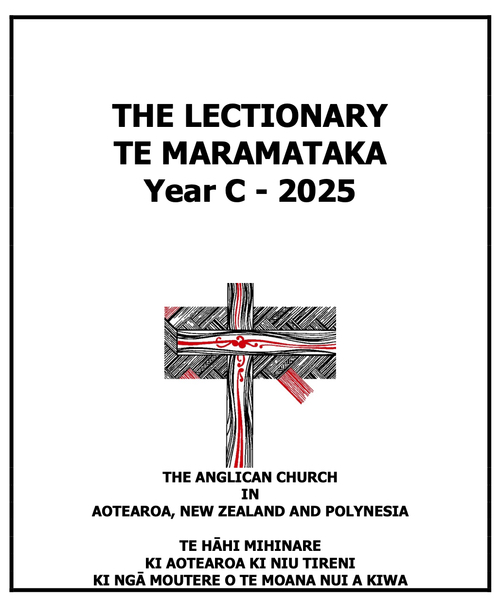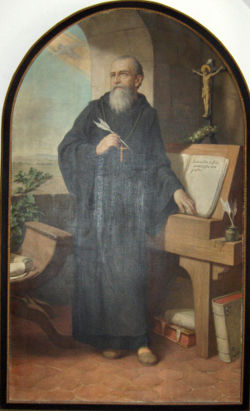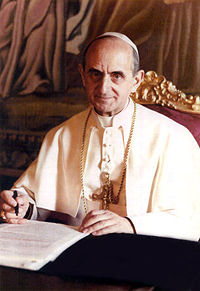
Update 31 December 2024:

Alert readers, preparing services for next week, have spotted other errors in the NZ Lectionary booklet 2025: 8 Jan (page 23) there are no such Gospel verses as “Matt 6:45-52”! That should read Mark 6:45-52 (and being the Anglican Church of Or, the same applies to 9 Jan on page 26).
*****
You will find New Zealand’s Lectionary Te Maramataka 2025 PDF online ( 1.57 MB – click link to download).
The official liturgical report (CLLC) this year to NZ’s General Synod Te Hīnota Whānui (in May) emphasised that there is a “lack of training and resourcing of clergy in liturgy… in our own province.” I have LONG been lamenting the dearth of liturgical study, and appropriate training and formation in worship, worship leadership, and shared spirituality…
One would have thought, therefore, that the CLLC (overseeing the publication of the popular, in-every-church, with-every-ordained-person-and-church-leader Lectionary booklet) would have ensured that there was good catechesis in this publication, year by year enriching our worship.
One would have thought…
Instead, this year’s Lectionary booklet once again reinforces common (unhelpful) misunderstandings.
The Mistaken Search for a Theme
… and the way that leads to reading less scripture…
The Lectionary booklet says:
The collects printed in earlier editions of ANZPB/HKMOA (before 2020) relate to the [home-grown, NZ Anglican] 2-year series and do not usually relate to other sets of readings. Using these with [Revised Common Lectionary] RCL will frequently result in a mismatch.
Yes – in the Seasons (Advent; Christmas; Lent; Easter), a strong thread runs through the three RCL readings (or the Roman Catholic 3-Year Sunday readings on which RCL is based). And so, in these Seasons, the collect would normally “relate” to these readings.
But in “Ordinary Time” (“Counting” Time – the word “ordinary” is connected to ordinal, counting numbers, 1st, 2nd, 3rd…), the first reading and the Gospel may “relate” (either reinforcing, but sometimes even contrasting!) But the second reading always has its own semi-continuous track. At the moment, for example, the second reading is working its way semi-continuously through the Letter to the Hebrews. And any connection to the first reading or the Gospel is “coincidental”.
Furthermore, the previous paragraph is only talking about the second column in the Lectionary booklet (the column called “RCL Related”). If your community is following the first column (called “RCL Continuous”), then the first reading is also following its own semi-continuous reading of the Hebrew Bible (Old Testament). In RCL Continuous, we’ve just been sampling Job semi-continuously, Sunday by Sunday, and are about to begin Ruth.
Let me stress my point again: (as I stress in my free, online book Celebrating Eucharist) the search for a theme (in Ordinary Time) is mistaken. And, in spite of my making the point explicitly in Chapter 7 of Celebrating Eucharist, there are still communities that give the (NZ, homegrown 2Yr Series) theme as the “theme” of the service even when what follows is readings taken from the 3-year RCL Cycle (provided in the Lectionary booklet)! [So, this coming Sunday, the 24th Sunday after Pentecost, they try to wrestle whatever they read to fit an “Our country” theme! I am even aware of NZ Anglican communities that equated the Ordinary Sunday number with the Pentecost number, running out of “themes” on Ordinary 27 which they equated with Pentecost 27!]
The 2020 and 2024 A New Zealand Prayer Book He Karakia Mihinare o Aotearoa is mistaken in assigning collects as if there is a theme in Ordinary Time readings. AND the Lectionary booklet reinforces this mistaken concept.
One might note that the older, better tradition of realising that readings are not “themed” is remembered in
A common practice is to use the collect for Sunday during the whole week from the “first Evensong” (on the Saturday night before) until the following Saturday morning.
Weekday Eucharists (following the Daily Eucharistic Lectionary [DEL]) clearly do not have a “theme” in Ordinary Time.
Now the punchline: If we have an invented theme to constrain what the Spirit might say to us individually and/or as a community through the scriptures (and other elements of worship), this is a strong explanation for omitting (a) reading(s)!!! Why would we read readings that distract from that theme?!!! Our diocese discovered significant biblical illiteracy and, a majority of Anglican parishes cutting down the number of readings used at the Sunday service (the psalm – in this “lack of training and resourcing of clergy in liturgy” – is regularly regarded as simply another reading rather than a prayer/hymn responding to the first reading).
This is NOT a collect
I have written previously that the process for authorising A New Zealand Prayer Book He Karakia Mihinare o Aotearoa starts at General Synod Te Hinota Whanui (GSTHW), includes all diocesan synods and hui amorangi, and requires a significant majority in a second time at GSTHW. This process means ANZPB/HKMOA is in our Church Constitution, requiring our assent and adhering to it. That formularies process was followed for every new edition from 1989 – 2020. Then, in 2020 a book was published with the same title (“A New Zealand Prayer Book He Karakia Mihinare o Aotearoa“), but without going through this process. And a further non-GSTHW edition in 2024. Then, when this new book was presented to begin the process in relation to a third of the 2020/2024 books, GSTHW did not accept that the material was of a good enough quality to proceed. Furthermore, at this meeting of GSTHW, the process was begun to alter the Constitution that only those parts of NZPBHKMA that had gone through the twice-round process require our assent and following.
At GSTHW2024, Rev’d Ivica Gregurec expressed concern that “nice prayers” were being presented, but many are not collects.
I have explained the nature of a collect as:
A collect is a short prayer which may have five parts (* essential) – my five titles will help you remember this:
YOU* – the addressing of God
WHO – what God has done or is like that indicates why we are confident when we make our request
DO* – what we would like God to do
TO – what we expect to happen when God fulfils our request
THROUGH*… Jesus…The 5-part collect prayer fits into the larger four parts, the core of collecting the community:
1) The bidding: “Let us pray…”
2) Individuals pray deeply in silence
3) The leader collects our silent prayer – in the “collect”
4) The collected community’s “Amen” to the collecting prayer
The Lectionary booklet further detracts from the collect being a central act of Gathering the Community by encouraging multiplying collects (as Anglicans were accustomed to doing in the BCP Evensong tradition):
A common practice is to use the collect for Sunday during the whole week … When other provision is made there is reference to it in The Lectionary . It is common also to add the collect for the day’s commemoration.
Common – maybe. A good idea? Not so much.
I was recently at a conference where a speaker described their struggle moving from Aotearoa New Zealand’s Prayer Book to Common Worship in the CofE. In Aotearoa New Zealand, this person said, one starts at the beginning working their way through the service book until the end. The “lack of training and resourcing of clergy in liturgy… in our own province” mentioned above by CLLC ends up with liturgy appearing like a string of lovely prayers rather than a dynamic journey we take together with some explanatory words. Helping people to come to an understanding of the “grammar” of the liturgical action is central to Celebrating Eucharist (and especially the accompanying video).
The 3-year cyclical nature of (Sunday) readings means that there is a lot of copy-and-paste for the 2025 Lectionary booklet from the 2022 one. In the 2022 Lectionary booklet, each Sunday was provided with a collect in the agreed (you-who-do-to-through) format (half of them were written by me). Unfortunately, in the 2025 Lectionary booklet, this provision has not been copy and pasted.
So, as just one example, instead of this 2022 collect:
God our rock,
the solid ground of our being;
help us dig deeply into your rich soil,
graft us into Christ the good tree,
so that we bear fruit that will last;
through Jesus who is alive with you,
in the unity of the Holy Spirit,
one God, now and for ever.
Amen.
the 2025 Lectionary booklet has:
Holy Spirit,
grant us who serve your Church
to mend what is spoiled,
to strengthen what is sound,
and to follow you wherever and however you may lead.
This we ask through Jesus Christ our Lord.
Amen.
Yes – the latter is a lovely little prayer, even a nice prayer in a possible string of prayers, but it is NOT a collect!
Let me conclude this section by underscoring that using any collect (from any source, or making your own) continues to be allowed. I have long been working on a resource, collecting collects we have in common: Book of Prayers in Common
Other Reflections
Page 4 of the 2025 Lectionary booklet states: “Collect endings: page 549 of ANZPB/HKMOA has been revised and is awaiting confirmation by GSTHW.” To my knowledge, that confirmation has happened?
Page 4 also states: “Collects in A Prayer Book for Australia have been reprinted in New Zealand for each of the three years of the cycle.” Again, using the passive tense in this sentence, without any indication where this reprint is to be obtained, isn’t useful.
There is ongoing confusion if colours are optional (page 4) or if they have a stronger status (page 169)
Page 6 has, very confusingly, “Collect refers to the suggested collect from ANZPB/HKMOA: e.g. Ep 7:2 means the 2nd collect provided for Epiphany 7.” ANZPBHKMA 2020&2024, of course, DO NOT HAVE a 2nd collect provided for Epiphany 7!!!
Feb 24 has “St Matthias the Apostle may be celebrated today if not on May 14″, to my knowledge, the moving of Matthias to clash with Ngākūkū, Missionary in Mataatua on May 14, has been completed, much to my surprise that Tikanga Maori approved this. I’d love to be corrected.
Further, there is much in a publication such as this that is good and is of value, helping connect to the world-wide church, and back through the traditions of the centuries, while grounding us in this place in the South Pacific, at this time. Those tend to mostly be when the lectionary booklet expresses what we have agreed together – including celebrations of days that are international and ecumenical, as well as of persons who have expressed God’s love and life on these shores.
In a document like a lectionary, the devil, of course, is in the detail. That detail will, for some, appear as nitpicking (gnatpicking?). Pleasingly, some errors noted on this site in previous years have been corrected.
On the publication of A New Zealand Prayer Book/He Karakia Mihinare o Aotearoa (ANZPB/HKMOA), much was made of the “A” – it is A New Zealand Prayer Book [the Te Reo Māori title of this Prayer Book emphasises the same – “He” not “Te”]. Anglicans were not arrogant enough to claim production of THE New Zealand Prayer Book. Year by year, however, the Lectionary calls it The New Zealand Prayer Book [Lectionary booklet page 2].
“Propers” (Arabic numerals) are in – described as the “numbering system of the Revised Common Lectionary” (page 7). Propers go 1, 2, skip 3-6, then 7. Christmas propers (Roman numerals I, II, III) are also in. There, Propers I, II, and III (Roman numerals) are followed immediately by Propers 1, 2, and 3 (Arabic numerals). And the instructions around their use are confusing (can “Proper II and the collect, Proper 2, be used for Midnight or only on ‘Christmas Day at Dawn’?)
Some errors continue. General Synod Te Hinota Whanui (GSTHW) went to significant effort (includng debate in every diocesan synod and hui amorangi, then debated again at the next meeting of General Synod Te Hinota Whanui) about the use of “of, in, or after” in titles for Sundays. The agreement was Sundays “of Epiphany” – yet the Lectionary continues to call them Sundays “of the Epiphany”.
Our church’s formulary (agreement) is that “Ordinary time is the period after the Feast of the Presentation of Christ” (February 2). Yet the first Sunday after The Presentation, rather than being called the “1st Sunday in Ordinary Time” (following our GSTHW ruling) is called the “5th Sunday in Ordinary Time”. There is no sign of the 4th or earlier Sundays in Ordinary Time. [My own solution to this would be to change the formulary, and have our Ordinary Time begin the day after the Feast of the Baptism of the Lord following majority Christianity and the originators of Ordinary/Counting Time concept].
Issues such as this arise because our church is attempting, rather than having our own thought-through consistent approach, to stitch together Church of England, Roman Catholic, Revised Common Lectionary, and other systems.
The 5th Sunday in Lent (April 6) is optionally called “Passion Sunday” while there is no mention of the Passion. Ecumenical, international reform has the reading of the Passion on the 6th Sunday in Lent (as our Lectionary does also). The title “Passion Sunday” is, hence, best reserved for that international, ecumenical agreement.
“after” was not an option agreed to by GSTHW but “Sunday after Ascension” is an option in the Lectionary for 1 June.
On page 50 begins readings for “the 3rd Week of Lent”. Should that be “in Lent”? Furthermore, these readings are said to originate in “CWL”. There is no indication what CWL stands for or its status in our church or why there are not similar readings provided for the 1st and 2nd weeks “of Lent”.
The situation with CW is fraught. While the Anglican Church in Aotearoa, New Zealand and Polynesia has binding, formulary-level readings which we have agreed to use, on several feast days the Lectionary booklet has the heading CW instead. It is certainly not the case that “On a few occasions where provision is not made in RCL or in ANZPB/HKMOA, material has been included from Common Worship” (p.2).
It is simply not true, to take the March 30 occurrence of CW, that “provision is not made in RCL or in ANZPB/HKMOA” for Mothering Sunday, March 27 (Lectionary p48). A full page of resources is provided for this, including a set of readings, in ANZPB/HKMOA page 690.
The 19 March occurrence of CW is instructive. 19 March in the Lectionary is a bold-type St Joseph of Nazareth (page 45). In ANZPB/HKMOA St Joseph of Nazareth is “ordinary type” (ie. NOT bold) on ANZPB/HKMOA page 16. There is no reference to St Joseph of Nazareth in the list of ANZPB/HKMOA page 8. Normally, in such a context, the lectionary would simply provide readings from the (non-binding New Zealand Anglican resource) For All the Saints(FAS). The 2025 Lectionary booklet does that, in this case, but adds the CW resources.
There is no allowance for “St Peter alone” (CW provisions 29 June, page 92). ANZPB/HKMOA commemorates “St Peter and St Paul” (bold in the actual ANZPB/HKMOA, not bold in the {online ANZPB/HKMA).
Sunday, 20 July (Lectionary page 100) provides CW readings for “NATIONAL BIBLE SUNDAY”. Our agreed readings for that Sunday are those of the 16th Sunday in Ordinary Time. Using the CW readings seems to me to be a breach of our agreements? By all means, sing, pray, and preach about the Bible on 20 July, but if you cannot do that along with our three agreed Bible readings and Psalm, there seems to me something seriously lacking in the formation of your community and your leadership.
The provision for All Saints is further confused and confusing. The Feast, 1 November, falls on Saturday, but the Lectionary booklet seems to think it falls on a Wednesday! And that the next day (Sunday) is the 5th rather than what it actually is, the 2nd! Furthermore, with RCL’s provision and two other sets of readings in ANZPB/HKMOA page 671 for All Saints’ Day, I don’ t know that there is justification to add CW’s into the Lectionary booklet on page 139.
As in previous years, I would be interested to know where this lectionary booklet gets the ruling from: “The reading from Acts must be used each Sunday in Eastertide” (pages 64ff). It may very well be a good idea – but where does “must” come from? We are only required to follow formularies of our church – not what is indicated by this lectionary booklet. This is an important principle. Where the lectionary booklet does not conform to the formularies, we must follow the formularies, not the lectionary booklet. Where the lectionary booklet sets requirements beyond what the formularies require, we do not need to follow the booklet.
[Furthermore, as an aside, where does “Eastertide” come from in this lectionary booklet? Our formularies consistently call this “The Season of Easter”.]
Each year, I have been noting our Anglican Church of Or suggestion to have all four colours in the lectionary for the Second Sunday in November (9 November). The colours in the lectionary booklet are not required to be followed – in fact, the lectionary booklet itself claims it is simply collating “common practice in most parishes” page 4.
Other issues of the Anglican Church of Or continue.
November 20 can be:
Christ the King Sunday
or The Reign of Christ Sunday
or 34th Sunday in Ordinary Time
or Sunday before Advent
or Aotearoa Sunday
or Feast of Christ in All Creation
or, of course, A Spring Festival of Praise to the Creator (see page 168).
Are there any things you notice as you skim through the lectionary booklet for 2025 – things you like; things you think can be improved?
Do follow:
The Liturgy Facebook Page
The Liturgy Twitter Profile
The Liturgy Instagram
and/or sign up to a not-too-often email


